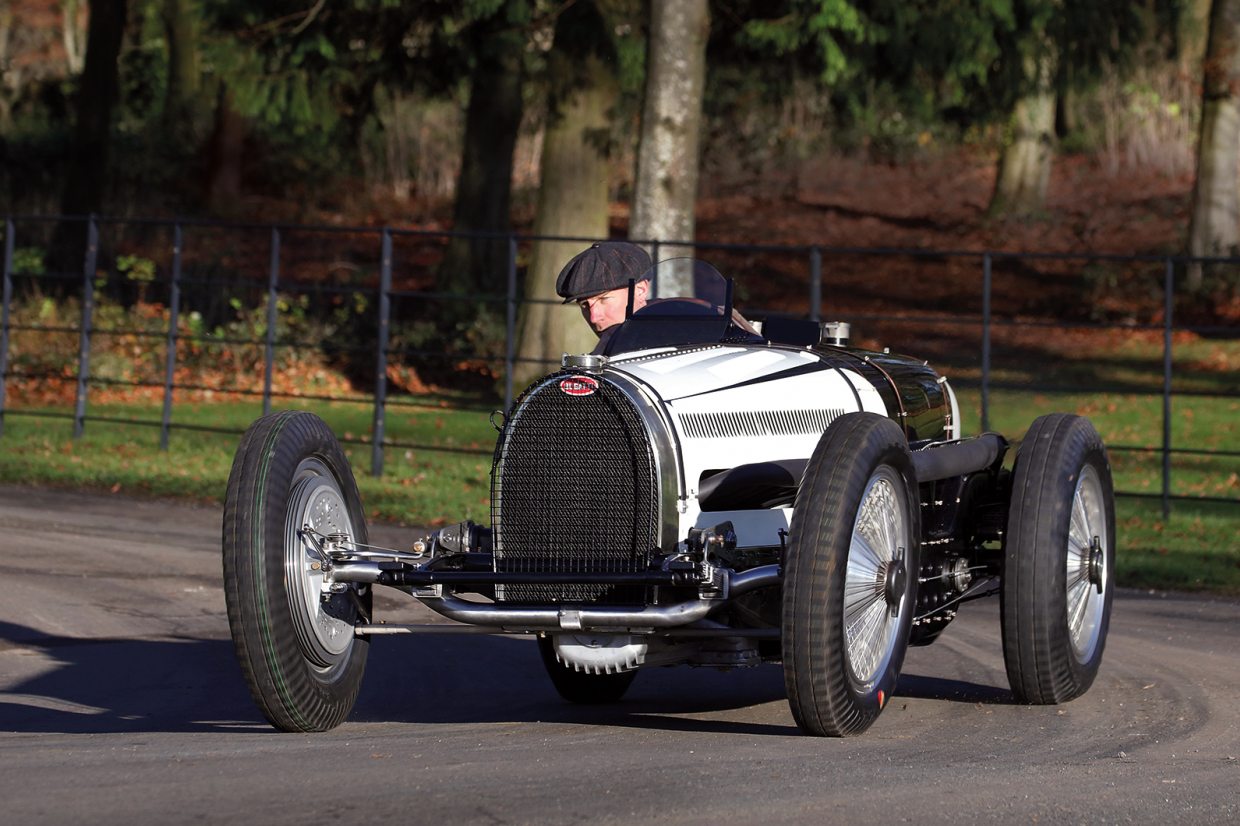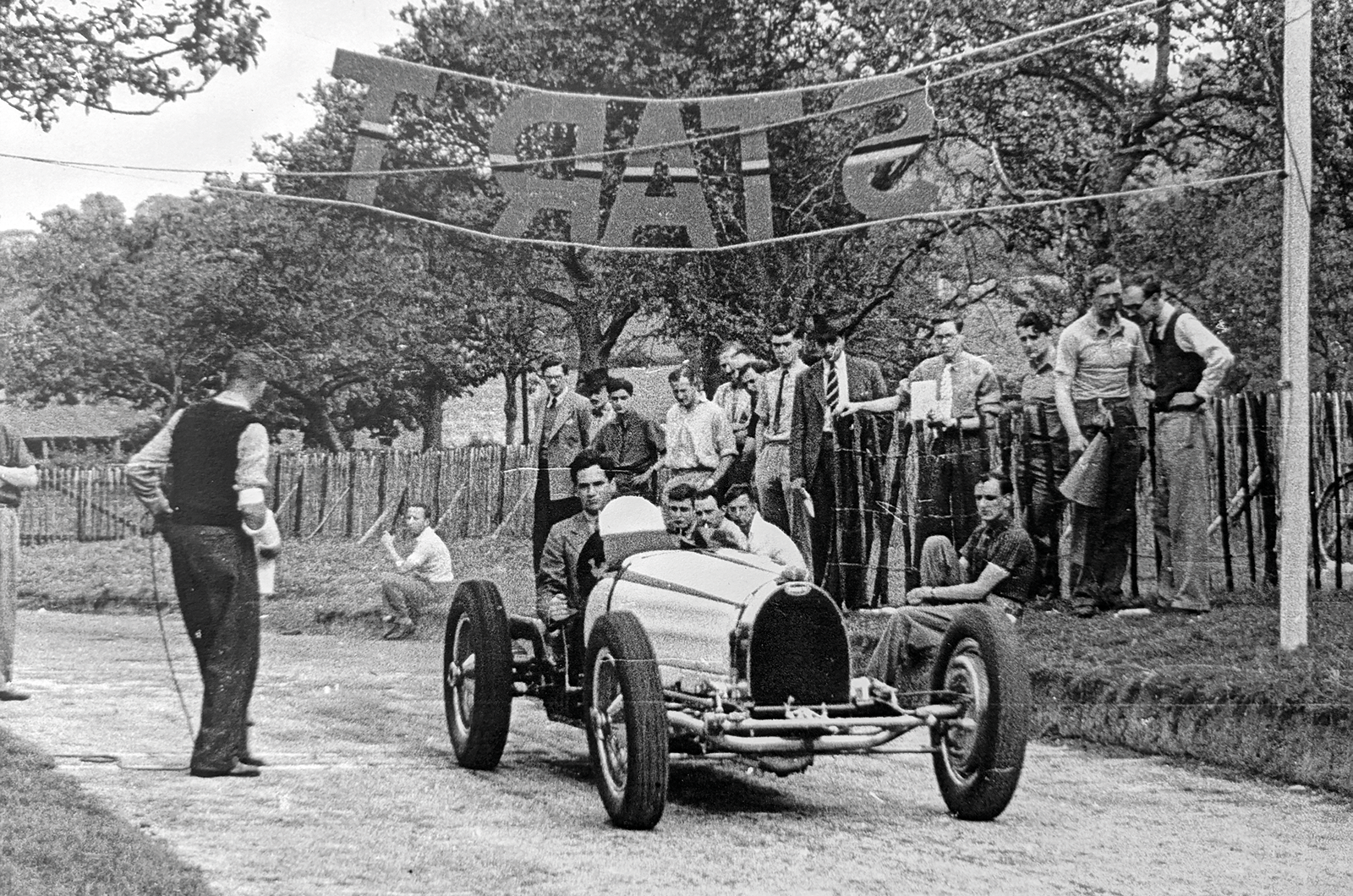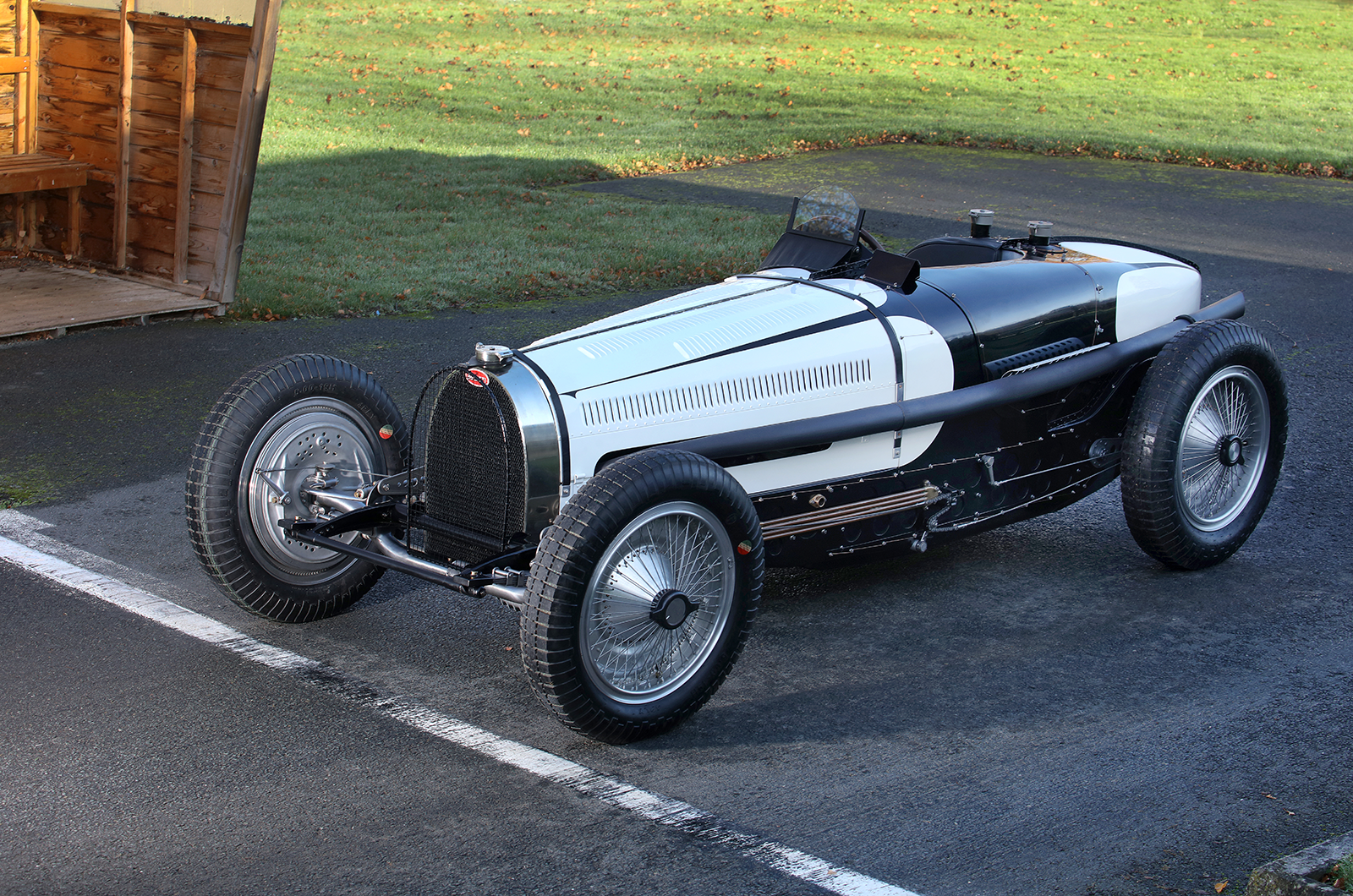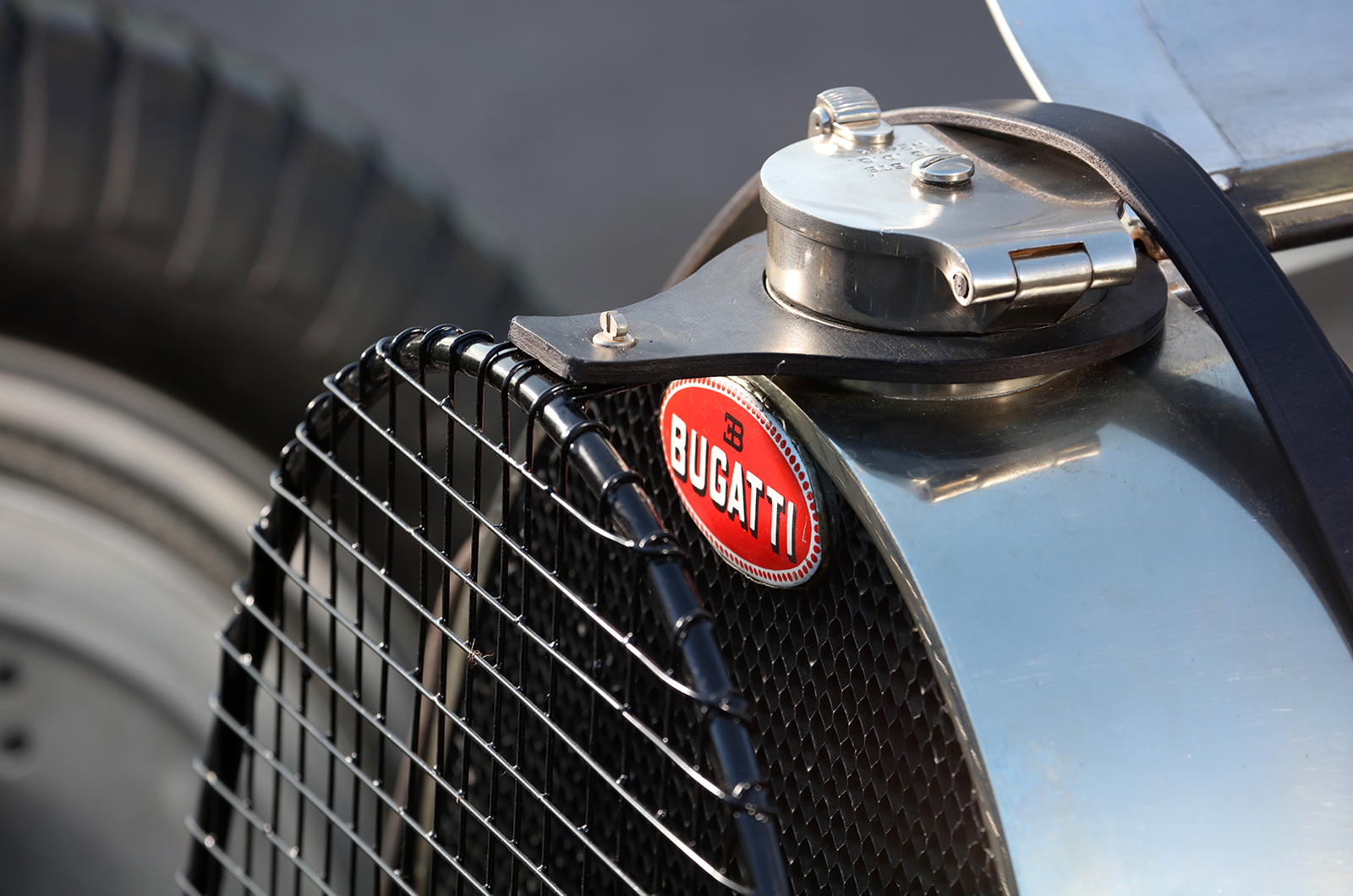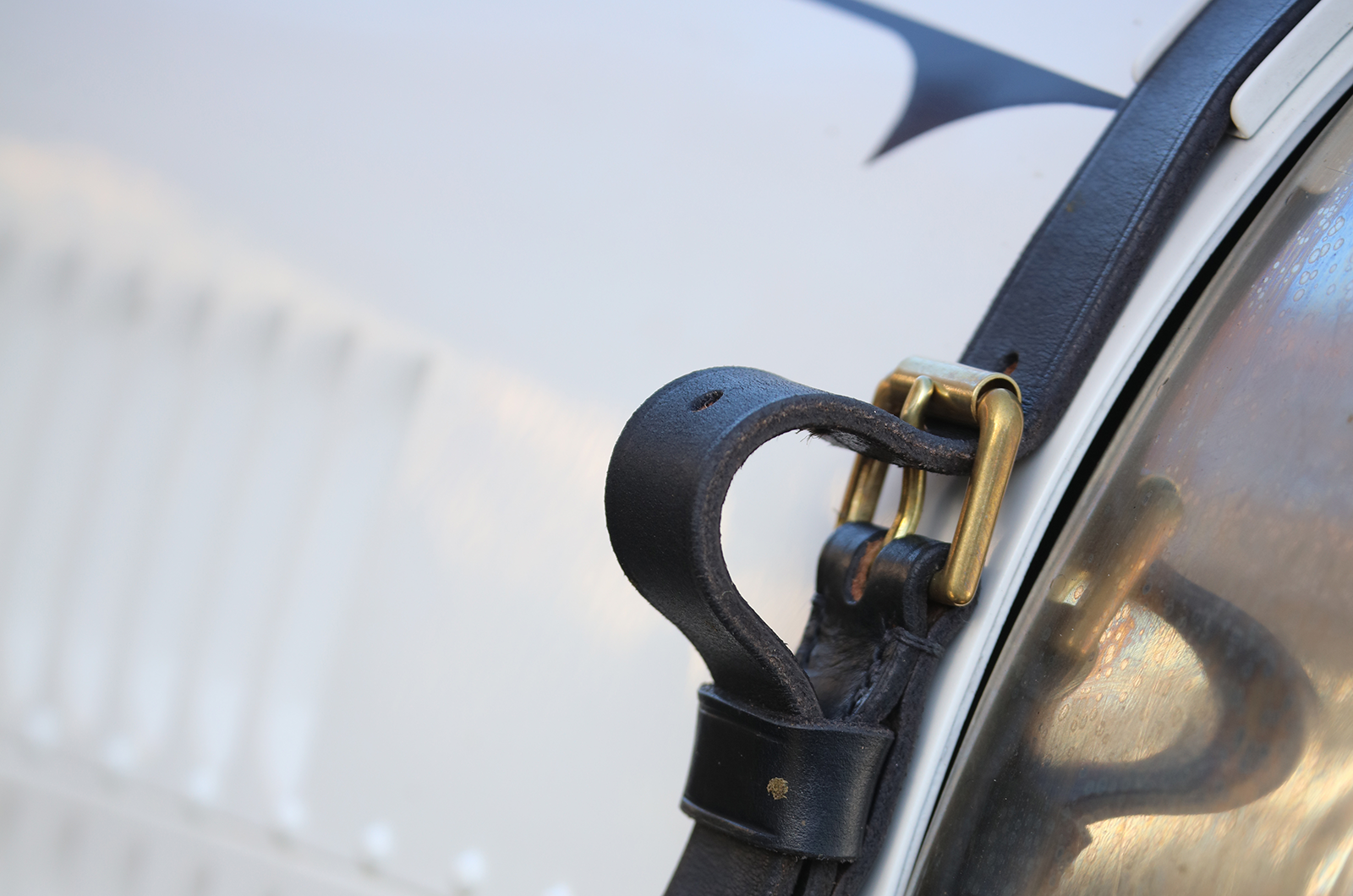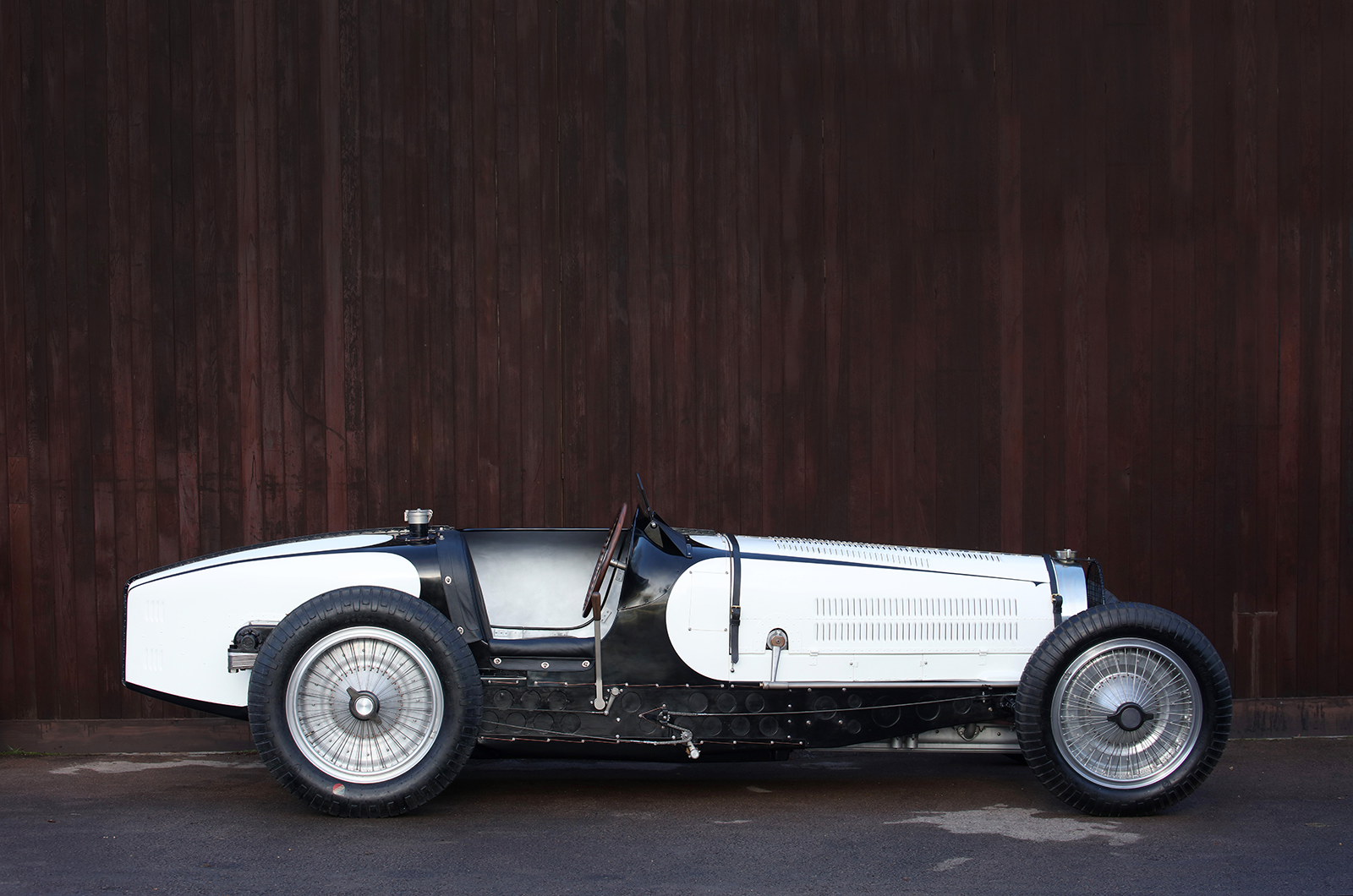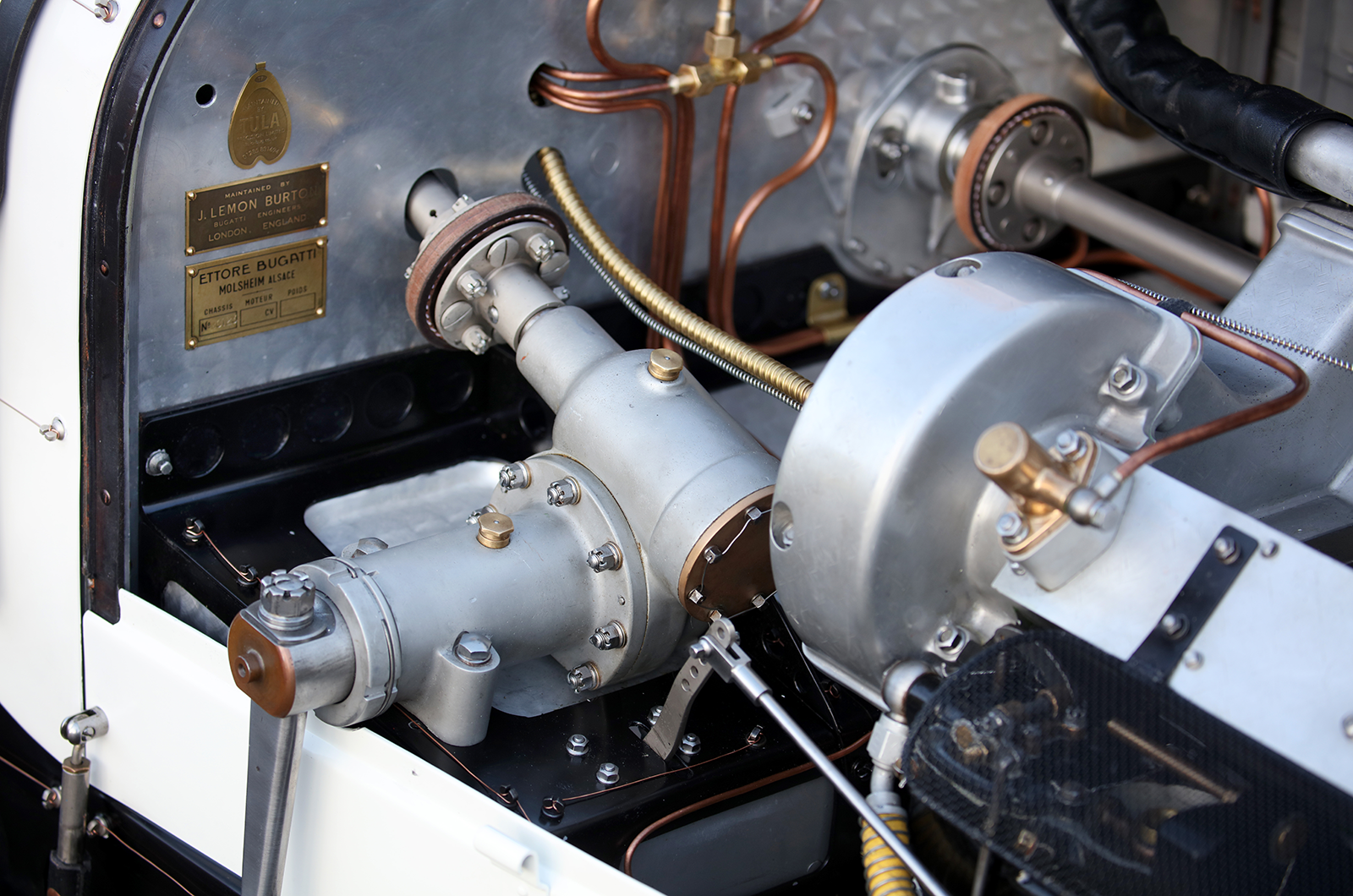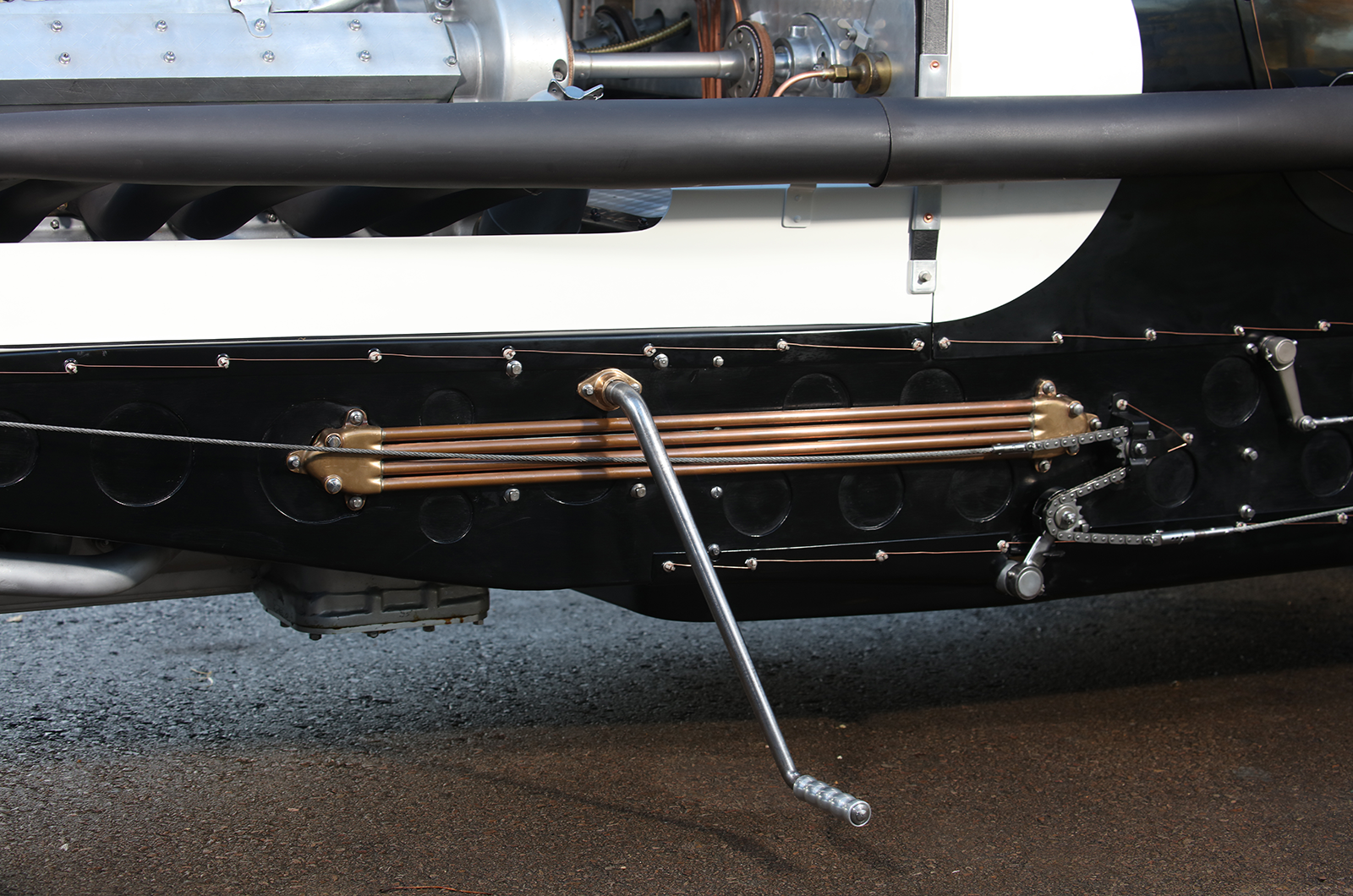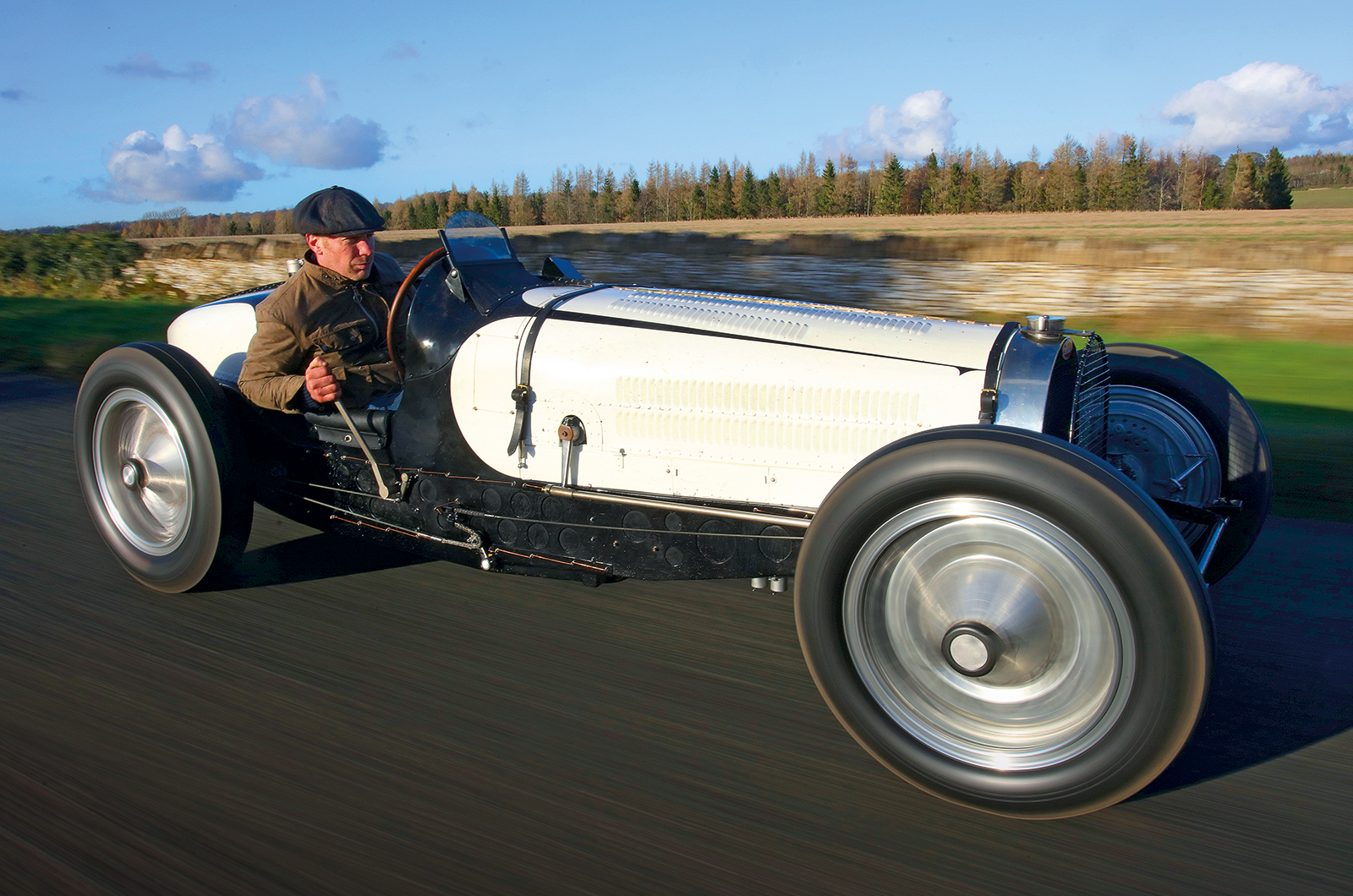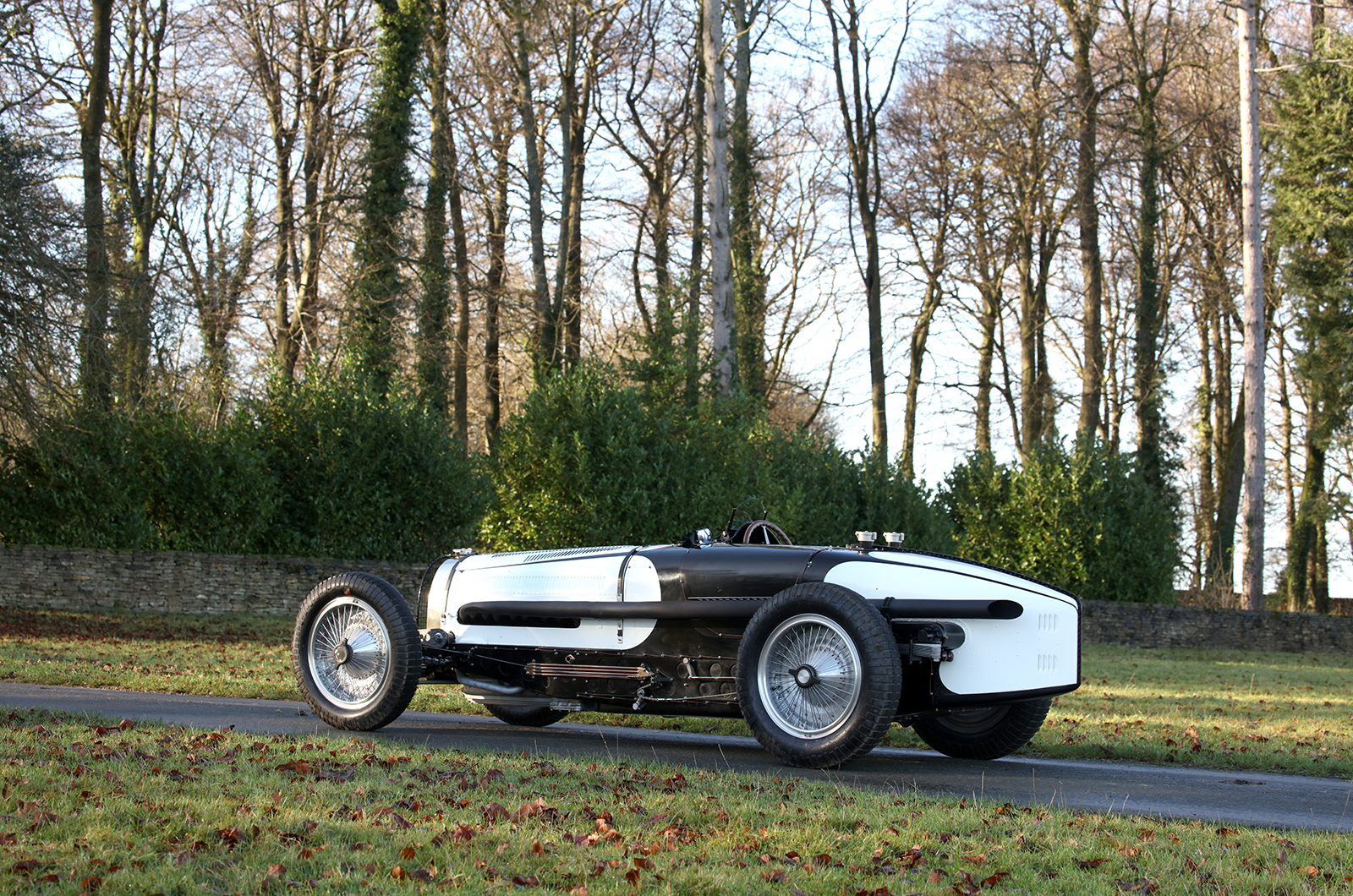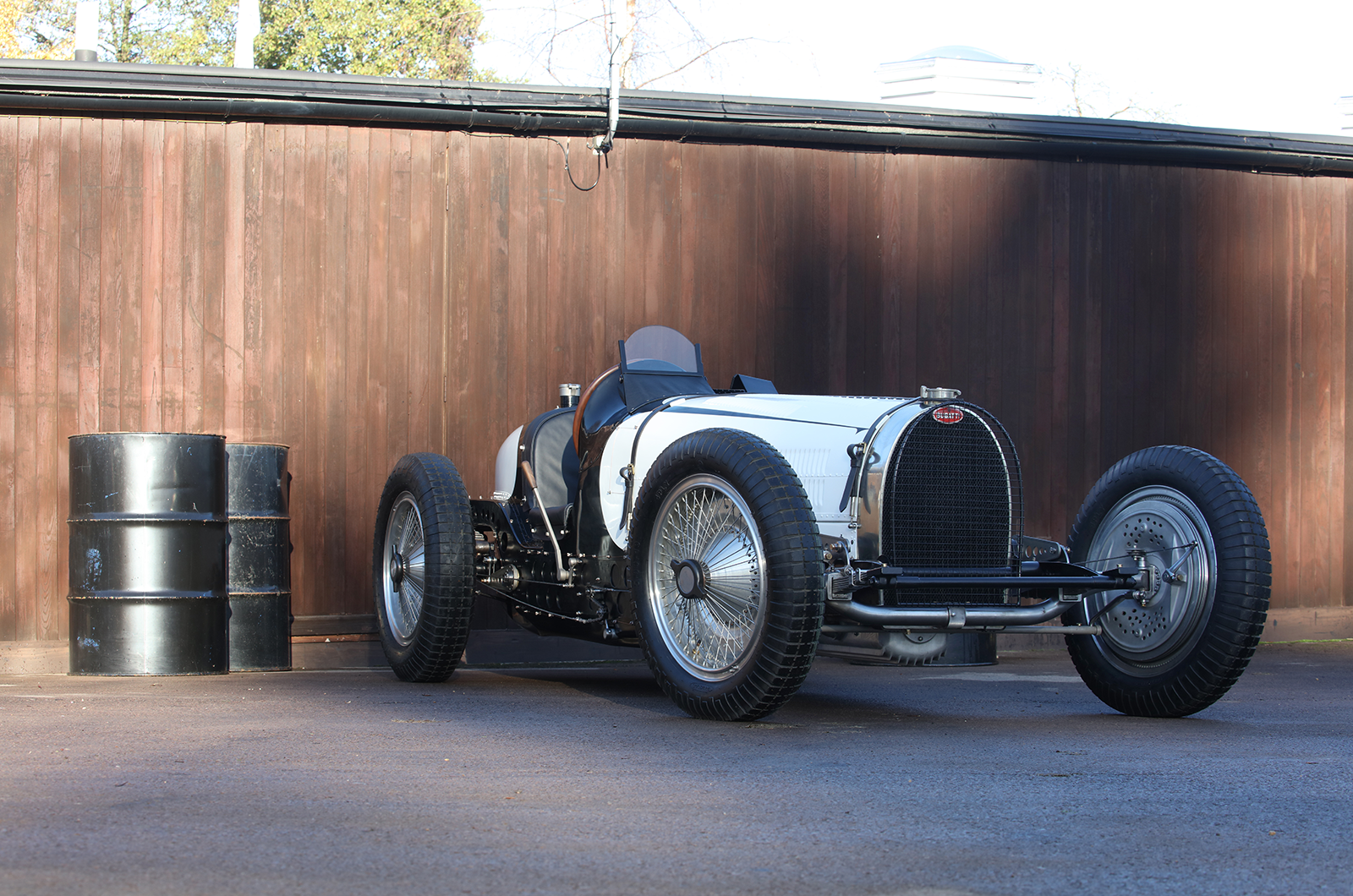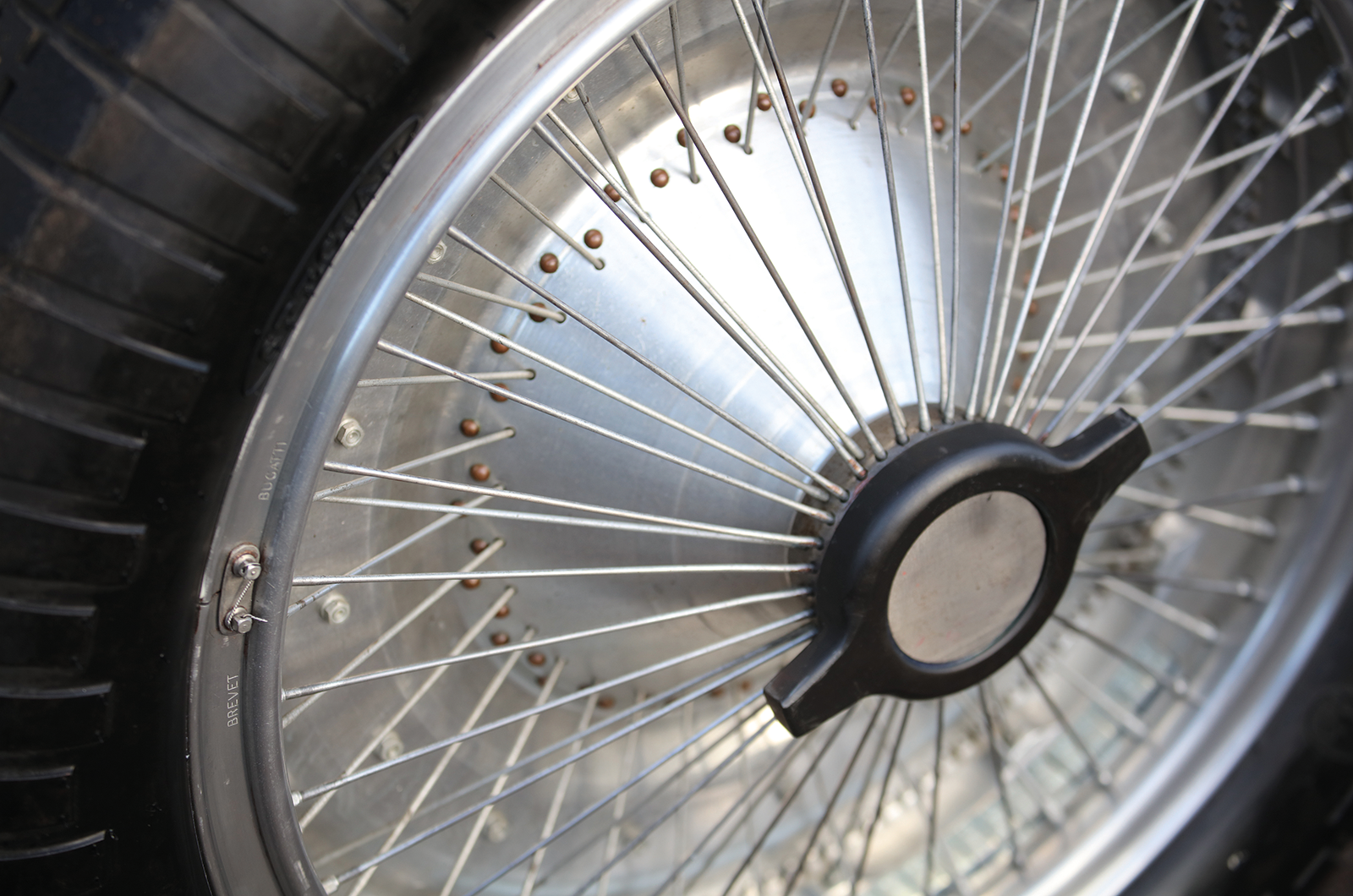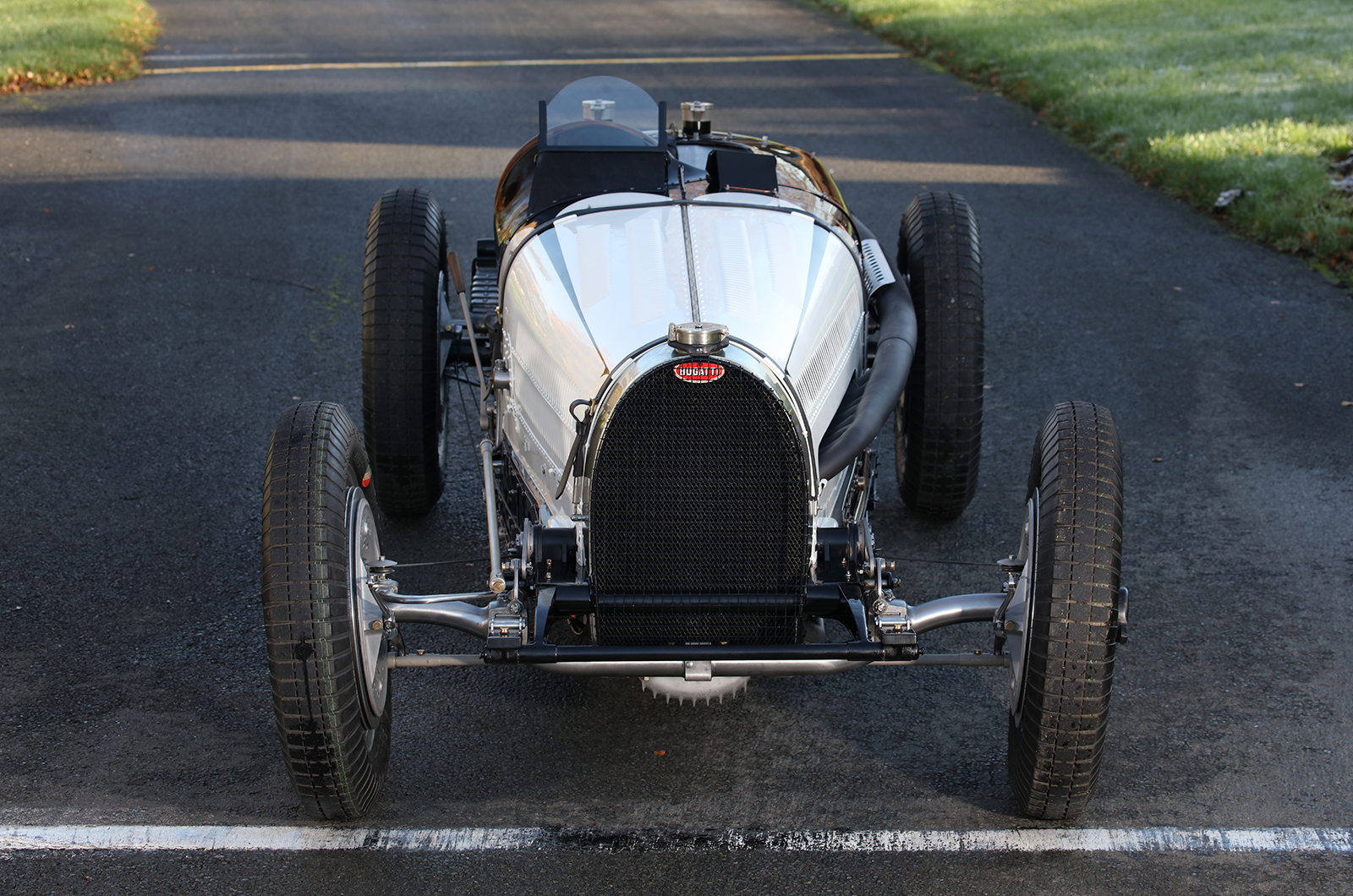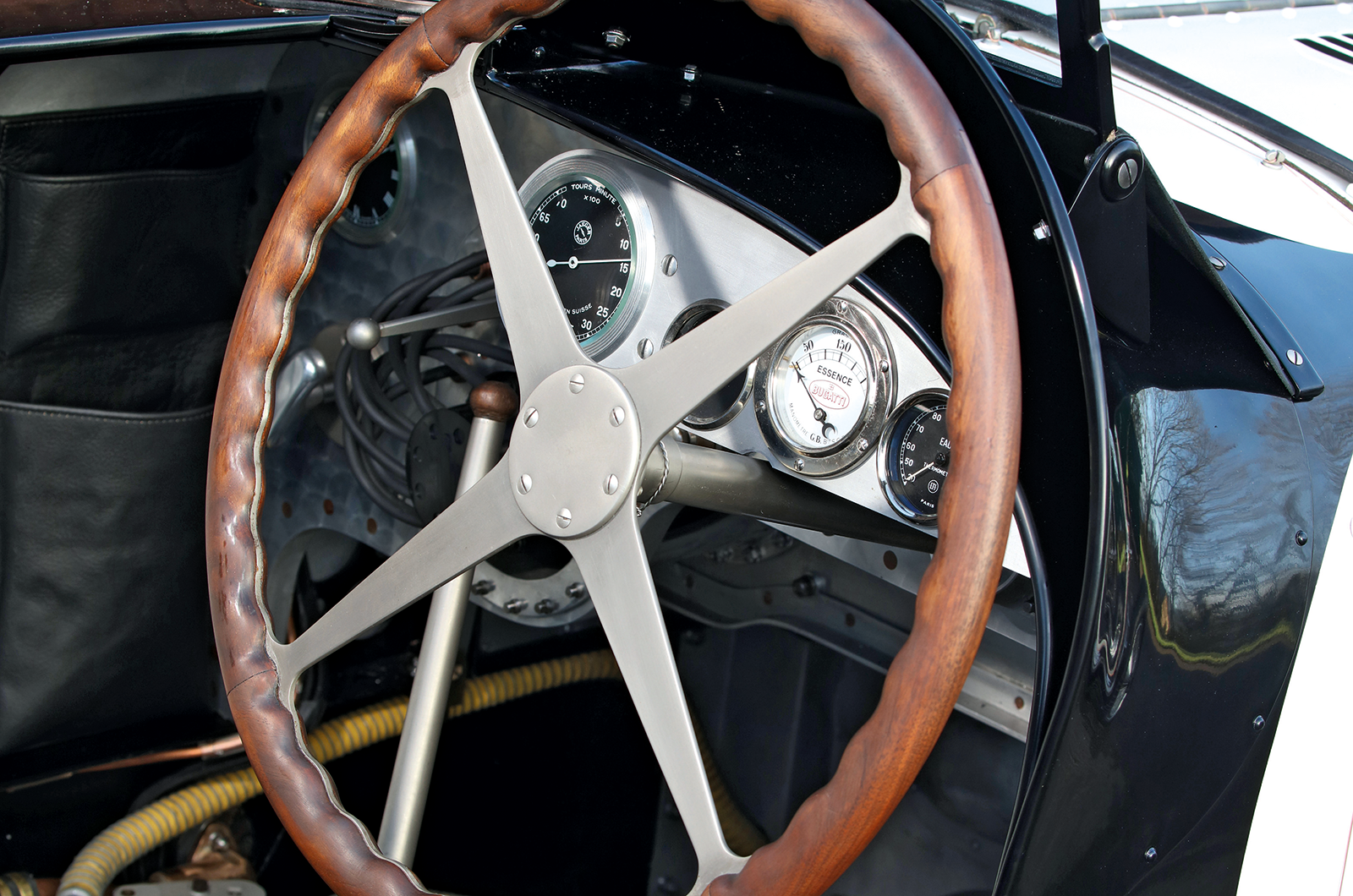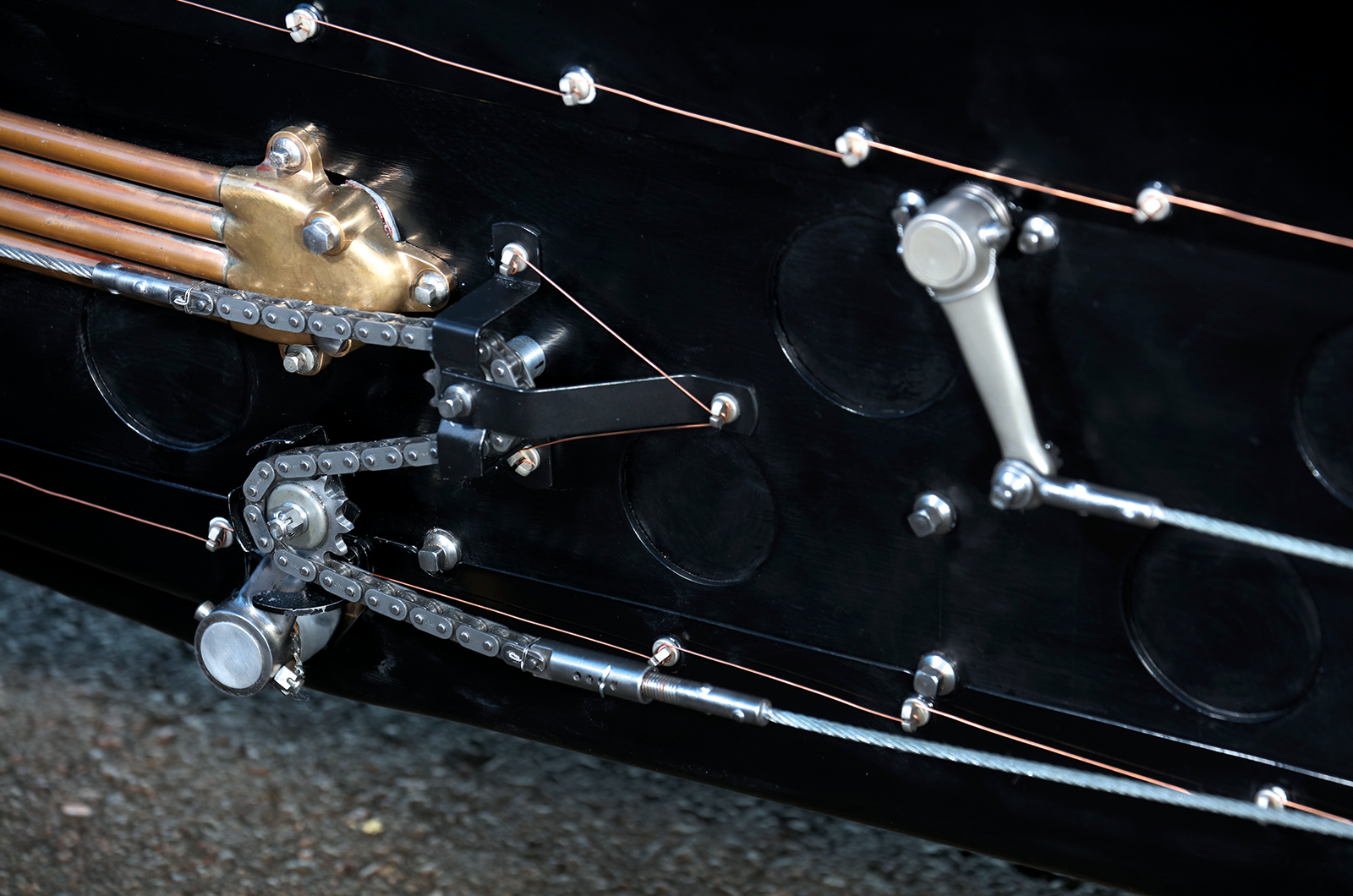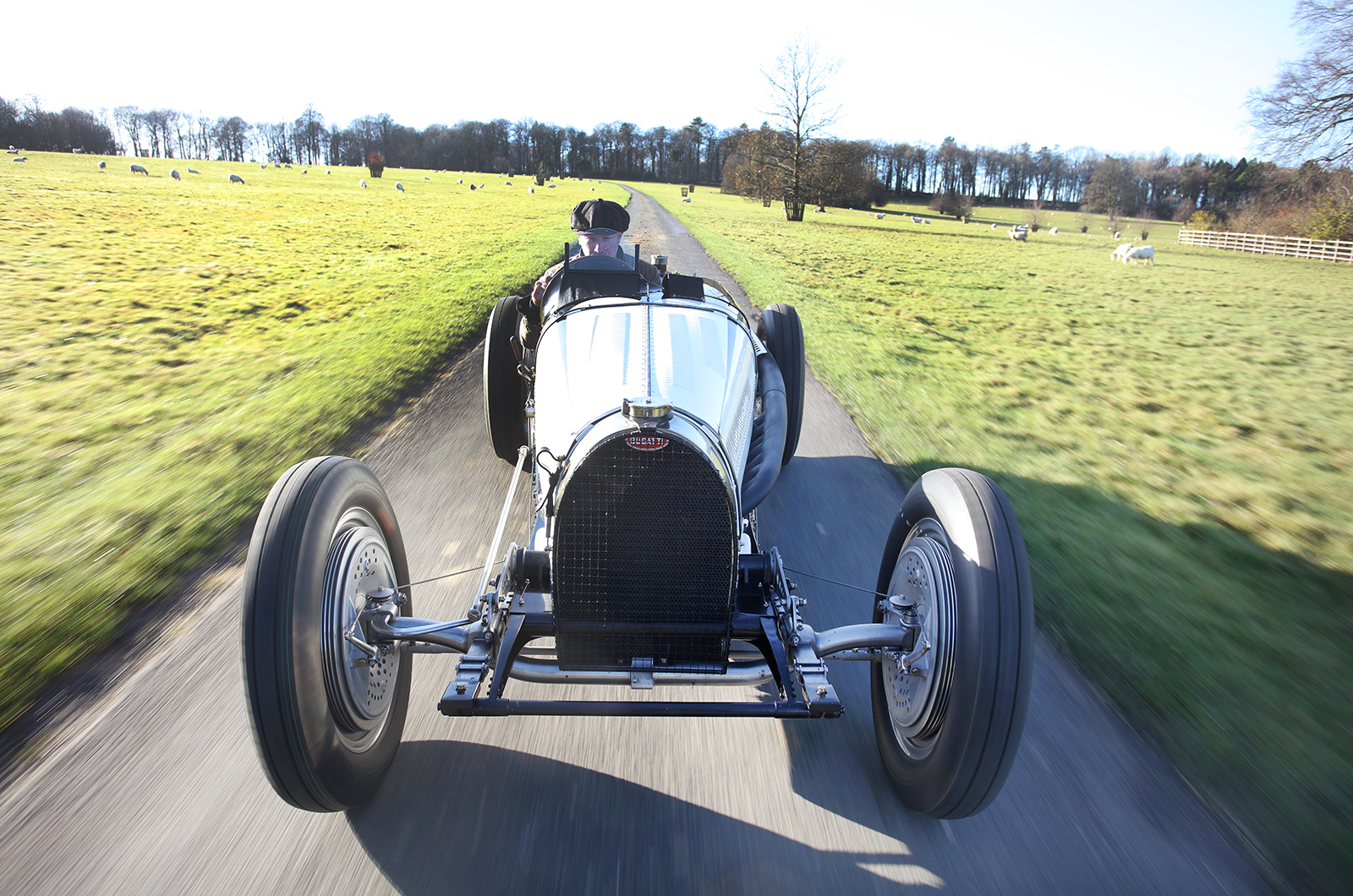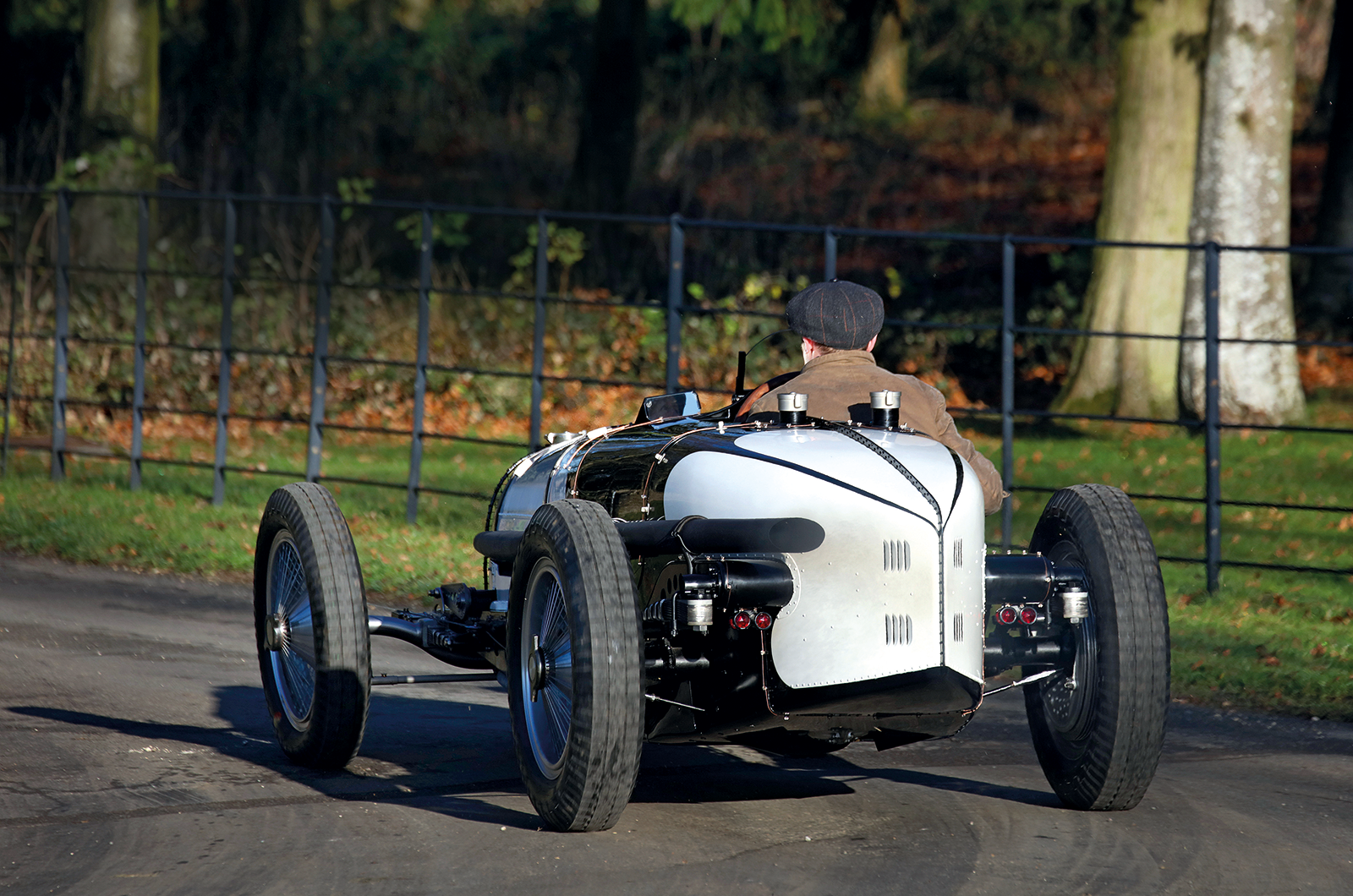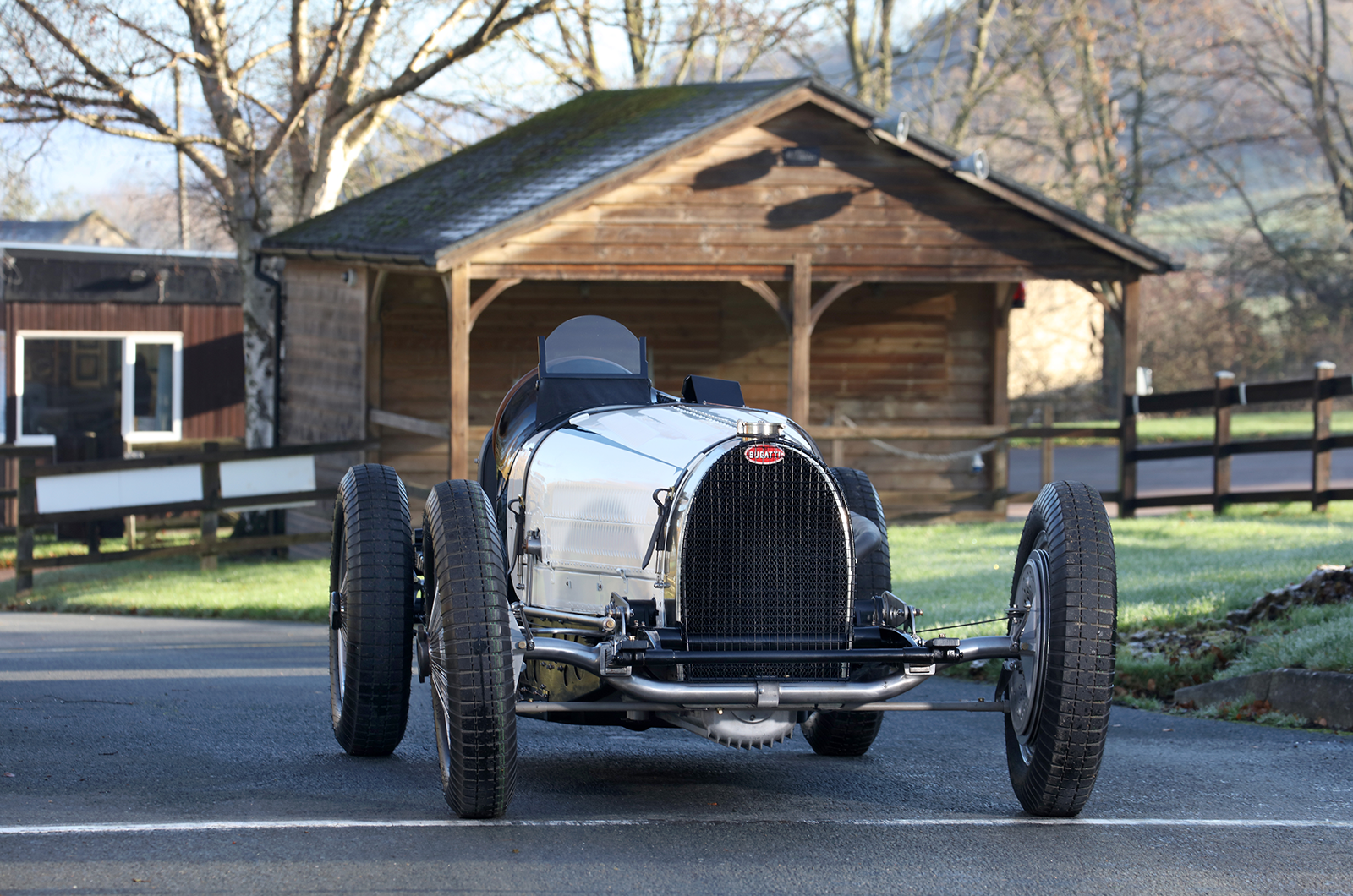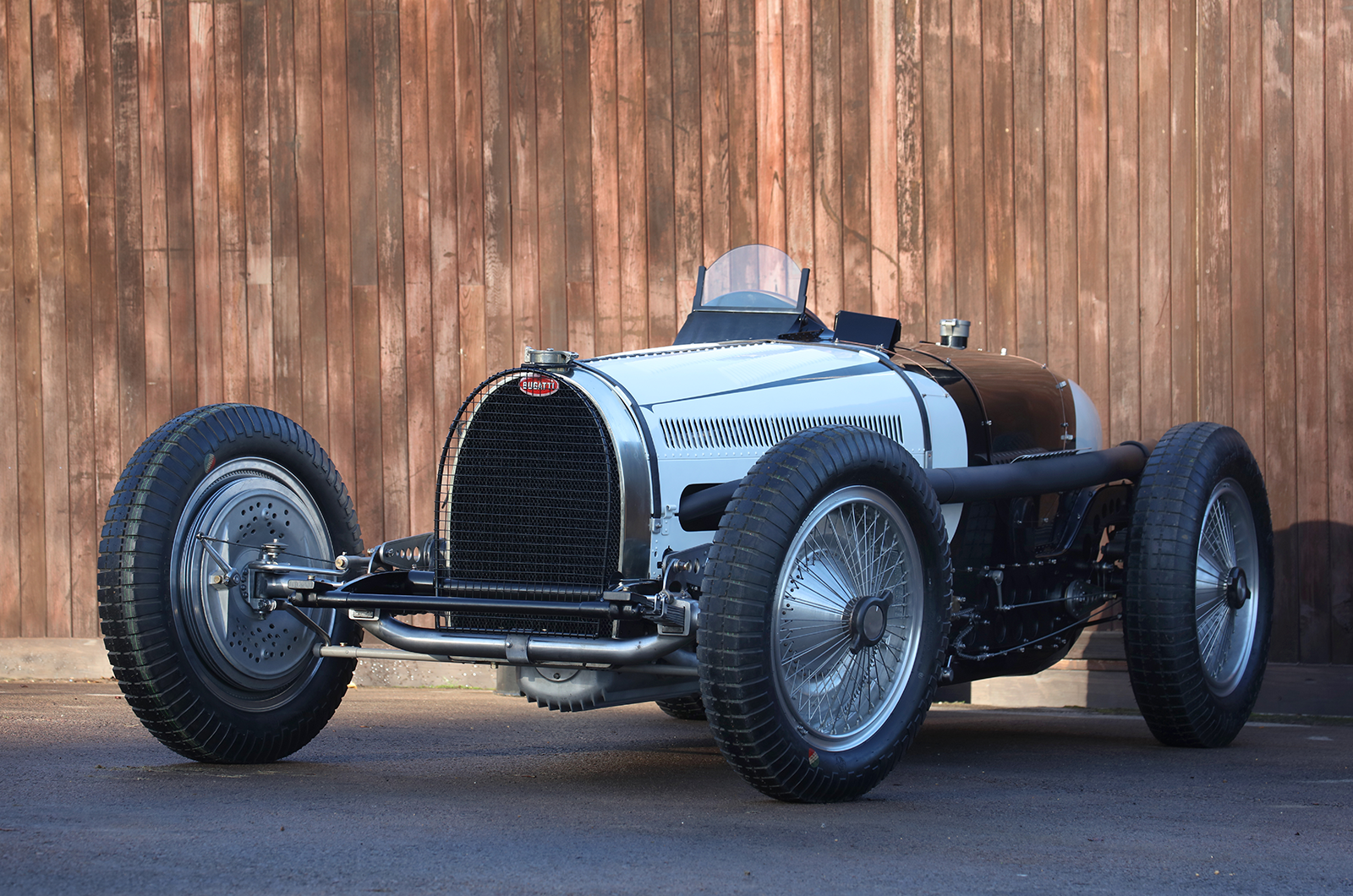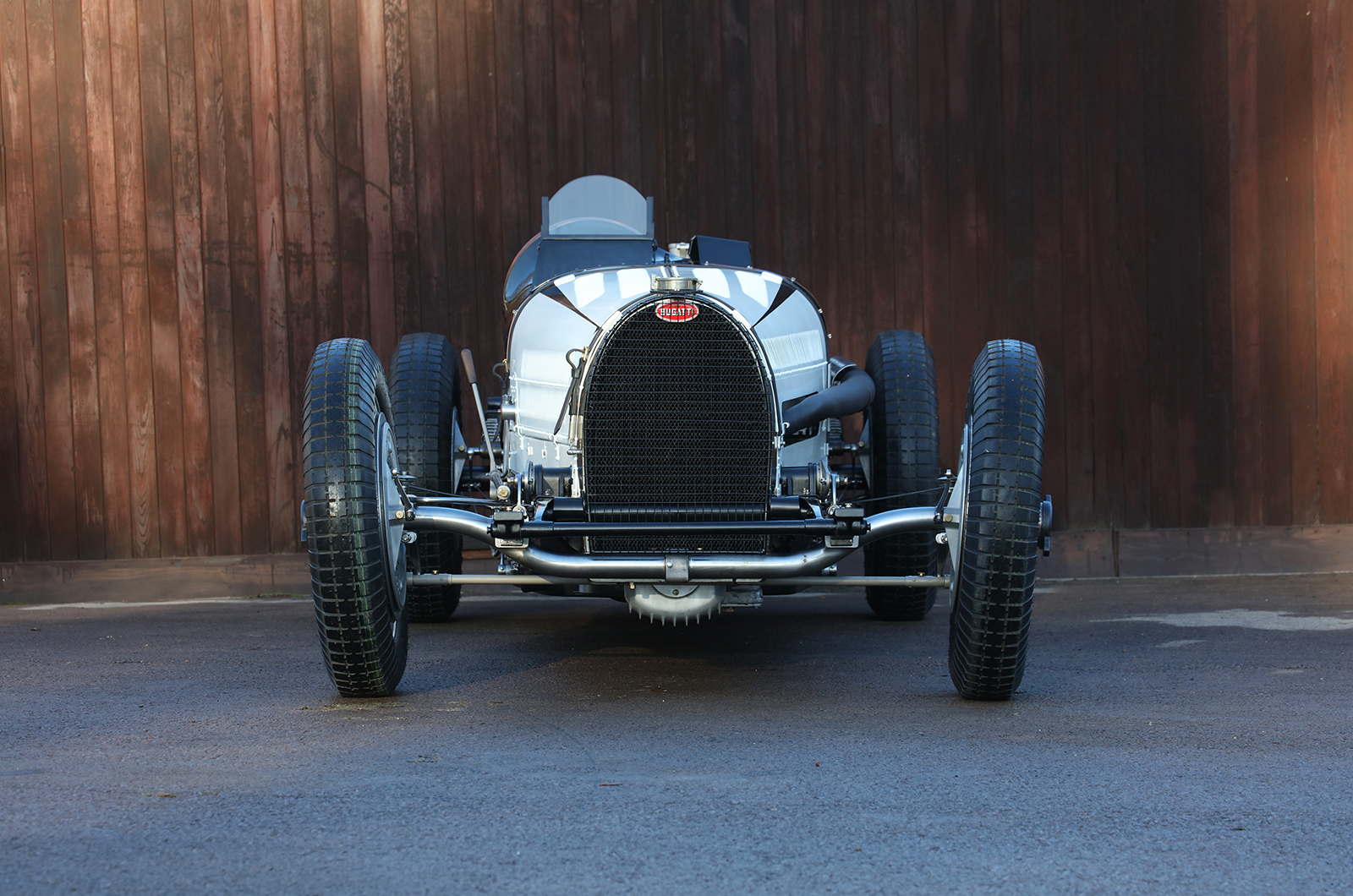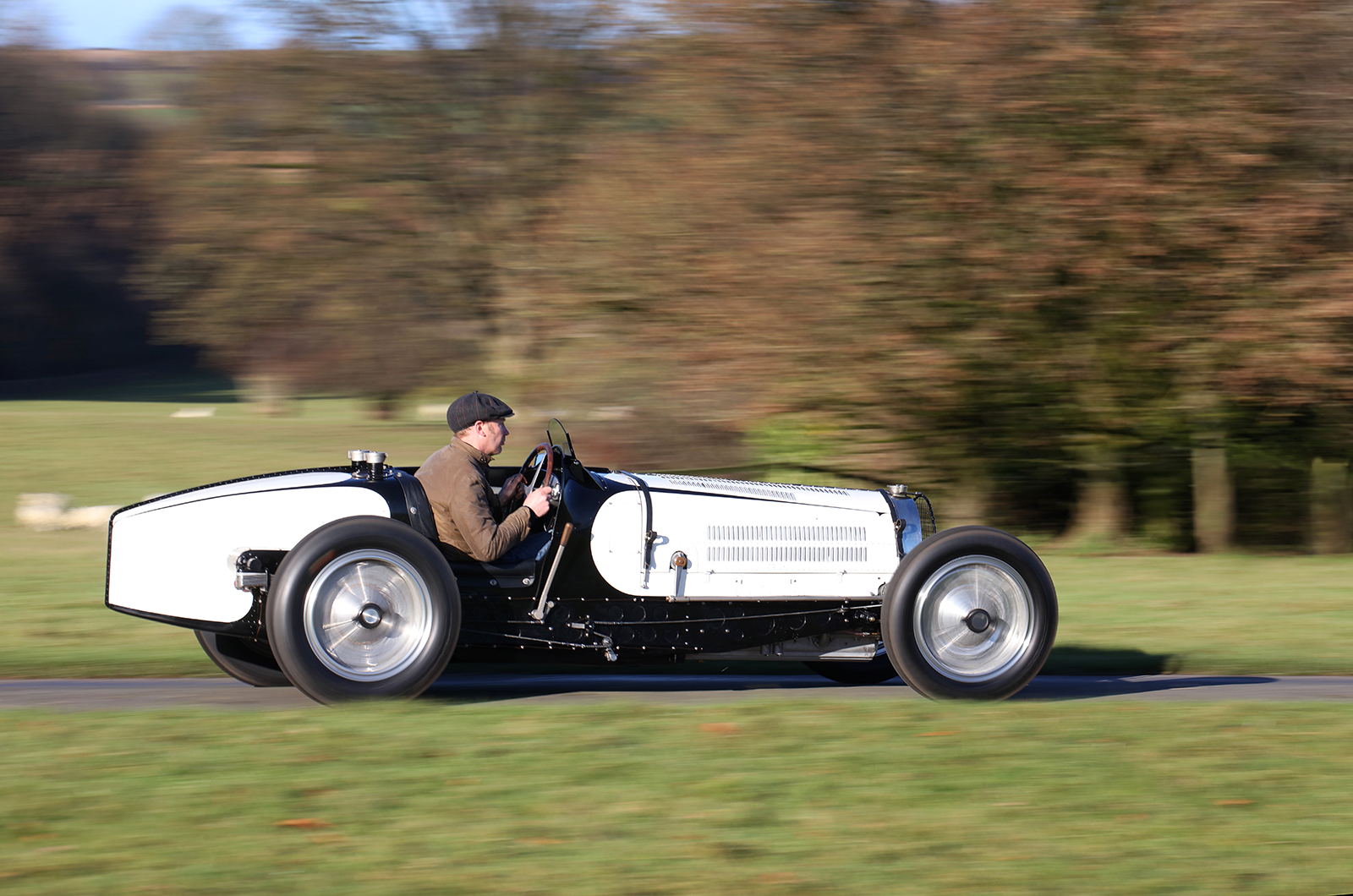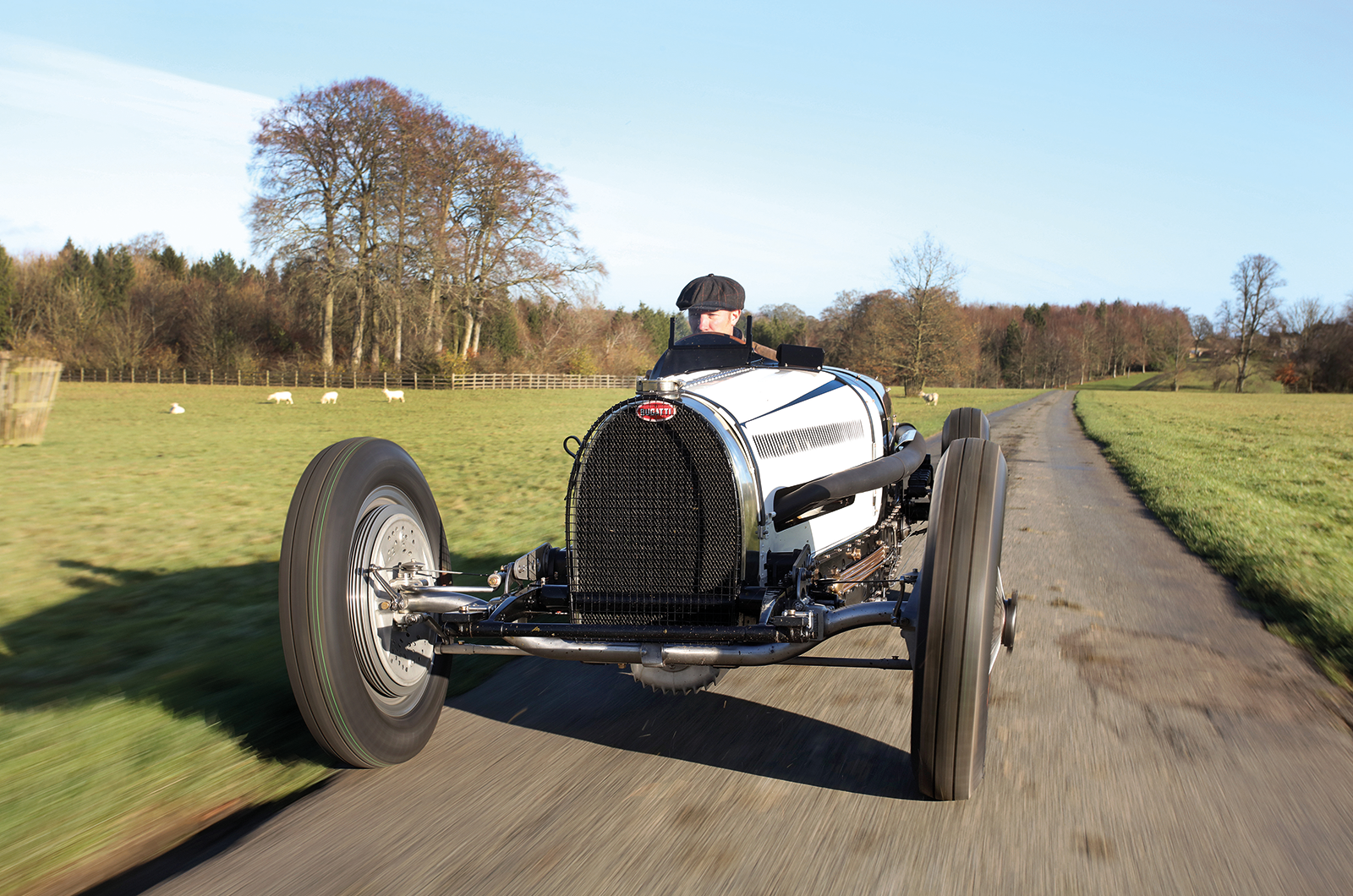By chance, a buyer was found the following year during the 10th Bugatti Grand Prix at Lime Rock Park, Connecticut.
The event also featured the International Bugatti Rally, and in the bar one evening Knill-Jones began chatting to a Danish customer who was looking for a fun car to restore.
“The idea of a T59 project appealed. I insisted he buy it direct, but because the car was in my workshop it made sense for us to do it. As we took it apart, a series of horrors was revealed and it was clear the car hadn’t been driven.”
After being stripped to a bare chassis, the T59 was rebuilt and first ran without a body in 2019, but then came the question of the paintwork.
Getting the paintwork just right was a labour of love
“I felt it was important to give the car a new identity,” says Knill-Jones, “and because all the original liveries of the Type 59 racers were around, we had the idea of reviving the two-tone colours Ian Craig had painted 59124 in 1938.
“The owner was fantastic and really believed in the idea from the start. The Bugatti Trust provided us with some reference pictures, and artist Stefan Marjoram produced some computer studies to work out the scheme.”
Although there are conflicting reports about the actual Craig team colours, with white, cream and yellow all mentioned in contemporary reports, Knill-Jones decided on pure white for the best effect.
The team worked to a tight deadline to complete this project
“Stefan was a brilliant help and produced several designs based on photographs of Ralph Lauren’s black car. He also tried black-painted wheels, which featured on 59124 just after the war.
“With no clear rear shot of Craig’s car to show how the paintwork was originally resolved, Stefan used some artistic licence and didn’t blend the black at the tip. All along there was no intention of copying the Craig car, it was more of an homage. We took the illustrations to Rétromobile in Paris and showed them to the client, who just told us to go for it.”
Once the mechanicals had been sorted during testing of the exposed chassis on local roads last summer, the Tula team focused on the bodywork.
“We masked it all up to finalise the positions of the scallops, and sent it to Race & Restoration in Cirencester to do the paintwork. The pressure was on, because the owner wanted the car home in Denmark before Brexit.”
This distinctive livery is perhaps best appreciated from the side
The bodywork was sprayed with two-pack paint, but without a lacquered finish: “To give it amore period look, we rubbed it down with 4000-grit sandpaper and then polished it with a tinted wax, which gave it a lovely lustre.”
The team worked flat-out during the autumn to assemble and detail the Type 59, and as the temperatures dropped with the onset of winter, testing became a challenge.
“In the cold, it’s hard to keep the temperature in the engine and the carbs stop atomising the fuel,” explains Knill-Jones. “Bedding in the brakes was a problem, too, but the car was gorgeous on the road.”
Let’s hope we see this Bugatti back in Blighty
Just prior to the transport truck’s arrival to collect the Bugatti in November, Knill-Jones took it over to Prescott on a frosty morning for photography.
Sitting silent on the startline under the gantry with its blue-and-yellow Bugatti Owners’ Club banner, the scene brilliantly evoked Craig’s dramatic performance in 1938 at the final Prescott before the outbreak of war.
The Type 59 is now in Denmark with a very happy owner. There are no plans to race it, but Vintage Montlhéry – postponed until 2022 – is already in the diary.
Hopefully the car will come back to England for a service at Tula Precision and we’ll get to see Knill-Jones gun it up the Prescott hill.
Images: James Mann
Thanks to Charles Knill-Jones; Angela Hucke; Prescott Speed Hill Climb
READ MORE
Dream drive in a mighty Alfa Romeo Monza
Ferrari 250 Testa Rossa: Refined to perfection
The sole surviving Lancia D23
Mick Walsh
Mick Walsh is Classic & Sports Car’s International Editor
